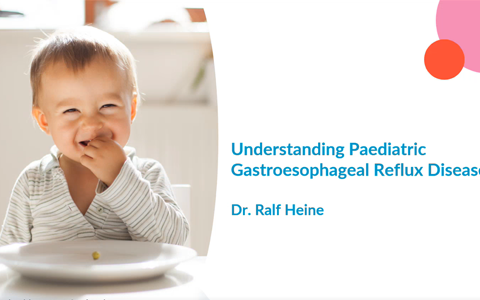
Highlights of the month
- Research
- Article
Real-World Evidence - The Impact of a Low Energy Partially Hydrolysed Enteral Formula on Feeding Experiences in Children Tube Fed with Neuro-Disabilities
The prevalence of children with complex neuro-disability has increased due to advances in the medical management of preterm infants and improved care for children with severe neurological impairment . Neuro-disability covers a wide range of clinical conditions, including acquired brain injury, epilepsy and learning disability. Neuro-disabilities present a significant disease burden for the child and family, with the focus for families to promote the best possible participation in life for all affected.
Children with neuro-disabilities can be significantly disadvantaged in their ability to nourish themselves due to poor hand to mouth motor coordination, along with disordered swallowing, resulting in aspiration of food in the lungs. The length of feeding time may be considerably increased and instead of mealtimes being an enjoyable experience, they are distressing for both child and carer. These impairments in feeding eventually lead to undernutrition and invariably children require a feeding tube to ensure nutritional requirements are met. Although tube feeding improves overall nutritional status, it has also been associated with an excess deposition of body fat compared with typically developing children. Children with neuro-disability are at risk of becoming overweight because of their low activity and psychosocial constraints. Additionally, children with a neuro-disability tend to grow slowly for non-nutritional reasons and have altered body composition due to underdeveloped skeletal muscle. Children are more likely to be overweight and tend to have low lean muscle mass - therefore a low BMI in this group does not necessarily imply low fat stores. Efforts are needed to protect severely disabled children from overfeeding and to help families of children with neuro-disabilities to manage their child’s weight.
Children with neuro-disabilities who are fed to 80% of their estimated average energy requirements have reported a positive energy balance resulting in high body fat mass. Of note, any attempt to dilute the existing proprietary feeds to reduce the calorie intake to a level commensurate with the energy expenditure of a child with a disability is likely to have an adverse impact on micronutrient and protein intake.
The clinical nutrition industry has responded to this need and developed commercially available enteral formulas that are low in energy but nutritionally adequate for protein and micronutrients, essential for developing children who are reliant on enteral formula to supply a major proportion of their intake [8]. Additionally, feed tolerance is generally worse in children with neuro-disabilities, associated with comorbidities including epilepsy, posture and tone disorders, and medications used for the treatment of these conditions can further exacerbate gastrointestinal function. Common feed related symptoms associated with neuro-disabilities include vomiting, retching, pain associated with feeding - feedinduced dystonia, constipation, and gastrointestinal dysmotility.
The aim of this national multicentre retrospective study was to monitor the effectiveness of a low energy hydrolysed enteral formula on weight management, feed tolerance and health economics in children with a neuro-disability.
Resources for Enteral Nutrition
Other content you might be interested in

Gastro Intestinal
- Webinar |
- Videos
Crohns Disease Exclusion Diet - CDED: New insights and updates
- Scientific Content

Gastro Intestinal
- Webinar |
- Videos
Crohns Disease Exclusion Diet - CDED: New insights and updates
- Scientific Content

Malnutrition
- Webinar |
- Videos
Unlocking the Key to Optimal Nutritional Treatment: Tackling Malnutrition and Sarcopenia
- Scientific Content

Cows' Milk Allergy
- Webinar |
- Videos
Understanding Paediatric Gastroesophageal Reflux Disease - Insights for Healthcare Professionals
- Scientific Content

Cows' Milk Allergy
- Webinar |
- Videos
The early-life gut microbiome: why it matters and how to nurture it for lifelong health
- Scientific Content

Malnutrition
- Educational Videos |
- Videos
Meeting the protein targets: Personalized Nutritional Strategies for improved Treatment Outcomes
- Scientific Content
Cows' Milk Allergy
- Webinar |
- Videos
Distinguishing between disorders of the gut brain interaction and cow's milk allergy in clinical practice
- Scientific Content

Malnutrition
- Webinar |
- Videos
Nutritionsbehandling vid undernäring och samtidig diabetes (in Swedish)
- Scientific Content

Enteral Nutrition
- Case Studies |
- Article
The Nutritional Challenges in a patient with Chronic Pancreatitis
- Scientific Content

Enteral Nutrition
- Case Studies |
- Article
The use of Peptamen® products in the community with a Head and Neck Cancer patient
- Scientific Content

Malnutrition
- Case Studies |
Screening toolkit - Evaluation of patient functional and nutritional status
- Scientific Content

Malnutrition
- Product Resources |
Nutrition, Motion, Go – Physical exercise programme
- Scientific Content

